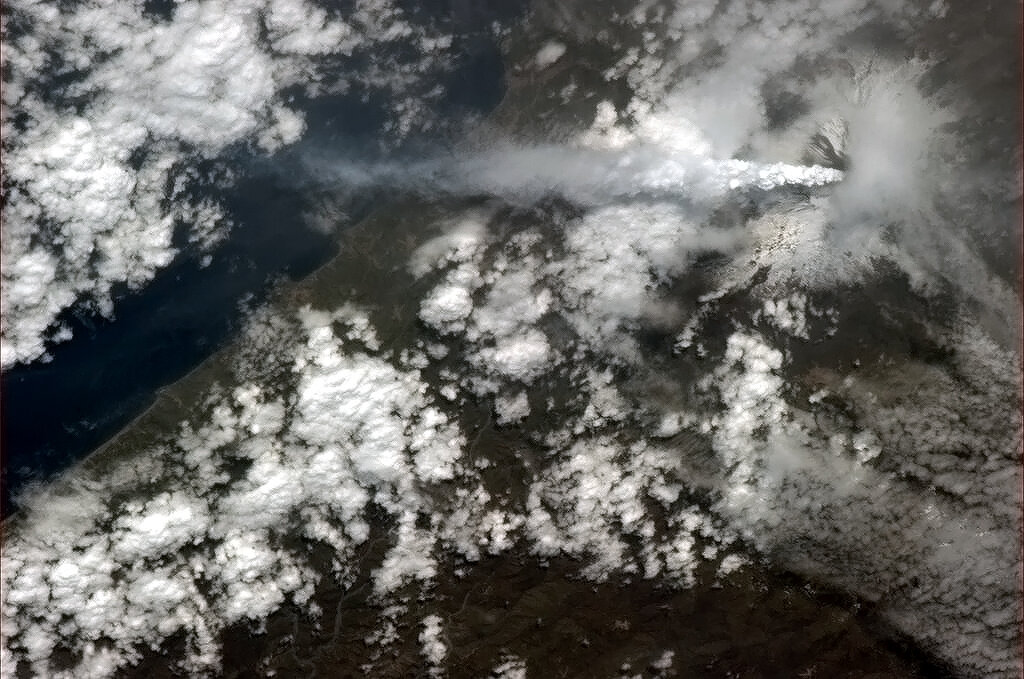Astronaut Snaps Photo of Mount Etna Erupting


Astronaut Chris Hadfield, the planet's most popular space shutterbug, snapped a spectacular photo of Italy's Mount Etna volcano streaming ash toward the sea early this morning (Feb. 28).
The volcano erupted yesterday (Feb. 27), the latest in a series of strong paroxysms, or short, violent bursts. For the first time, explosions and ash spewed into the air from Mount Etna's Voragine crater, while webcams trained on the fiery summit showed activity at Bocca Nuova crater as well.
Mount Etna's current eruption started with a stunning dawn lava fountain on Feb. 19, caught on video, followed in quick succession by three more paroxysms over the next two days. Then, on Feb. 23, towering lava fountains more than 2,600 feet tall (800 meters) shot out of Bocca Nuova crater overnight.
Ash cloaks the volcano's snow-covered slopes, but not enough to deter skiers. Small lava flows have also emerged from the most active craters. The volcano has four distinct craters at its summit: two central craters, Bocca Nuova and Voragine; the Northeast crater; and the new Southeast crater.
Hadfield, an astronaut for the Canadian Space Agency, is aboard the International Space Station. He regularly posts amazing images of Earth on his Twitter feed.
Reach Becky Oskin at boskin@techmedianetwork.com. Follow her on Twitter @beckyoskin. Follow OurAmazingPlanet on Twitter @OAPlanet. We're also on Facebook and Google+.
Get the world’s most fascinating discoveries delivered straight to your inbox.



